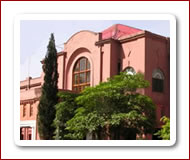Dr. Ahsan Numan
Title:
Response of Gingko biloba on electrophysiological, serum biochemical and clinical assessment of diabetic sensorimotor polyneuropathy in human
Abstract:
Diabetic sensorimotor polyneuropathy (DSP) is one of the most common diabetes-related complications affecting up to two thirds of patients with diabetes, often results in significant pain. The study aimed at examining the prevalence of DSP and its associated risk factors in patients with confirmed diabetes mellitus type-2 and its effects on electrophysiological measures of selected sensory and motor peripheral nerves. Attempt was also made to treat this disorder with Ginkgo biloba. This study was carried out on previously diagnosed diabetes mellitus type-2 patients treated at Diabetic Management Center, Services Institute of Medical Sciences in Lahore, Pakistan. The DSP was diagnosed using the Michigan Neuropathy Screening Instrument Score. Prevalence of DSP was found to be 31.48% when2,290 diabetes mellitus type-2 subjects were screened during April, 2013 to June, 2013. The patients with DSP were older (p < 0.05), had longer duration of DMT2 (p<0.01), elevated systolic blood pressure (p<0.05) and more obesed (p<0.01) when compared with the diabetic subjects without clinical DSP. Similarly, individuals with DSP had elevated levels of blood sugar (p < 0.05), HbA1c (p<0.001), serum cholesterol (p<0.01), serum LDL (p<0.001) and serum triglycerides (p<0.05) compared with the diabetic patients without clinical polyneuropathy. The renal functions tests, as determined in term of blood urea and serum creatinine levels, were also more disarranged in the subjects with DSP than those without clinical diabetic polyneuropathy. Multiple logistic regression analysis showed that the DSP was significantly associated with age of the patients, duration of DMT2, glycosylated haemoglobin level, blood fastening sugar level and serum triglycerides concentration
The second experiment investigated the effect of duration of DMT2 on the electrophysiological measures in subjects with or without DSP. Patients of diagnosed DMT2 and showing the symptoms of DSP were randomly distributed into 2 groups. Group-I (n=79) included the patients with DSP having <10 years of duration of DMT2, called short duration, while DSP patients of Group-II (n=49) had duration of DMT2 for ≥10 years, called long duration. The patients in both groups were compared with their corresponding duration of DMT2-matched individuals without clinical DSP. Latency, conduction velocity and amplitude of four sensory (median, ulnar, peroneal and sural) and four motor (median, ulnar, peroneal and tibial) nerves were measured. Results revealed that there was significant difference in all electrophysiological attributes of motor nerves except in tibiain the DSP patients when compared with corresponding DMT2 patients in short duration group. Bilateral changes were more pronounced in electrophysiological determinants of all sensory nerve except for ulnar nerve in DSP patients compared with the DMT2 for short duration. For long duration group, DSP nearly affected all 3 electrophysiological characteristics in both sensory and motor nerves when compared with the DMT2 patients. However, the electrophysiological indices were more deteriorated in DSP patients for longer duration compared with the DSP patients for shorter duration.
Arandomized, double-blind, placebo trial was carried out to investigate the utility of Gingko biloba for the treatment of DSP. One hundred and forty-four patients received Gingko biloba (120 mg/day) or placebo for 6 months. The efficacy was determined based on reduction in the components of Short-Form McGill Pain Questionnaire (SF-MPQ) and improvements in the electrophysiological measures (latency, amplitude and conduction velocity) of four sensory (median, ulnar, sural and peroneal) and four motor (median, ulnar, tibial and peroneal) nerves. The SF-MPQ was assessed pretreatment and at 3 and 6 month post-treatment, whereas, the electrophysiological attributes were measured before and after the treatments. Results revealed that mean scores of all domains of SF-MPQ (sensory, affective, total, VAS and PPI) in the Gingko biloba-treated patients were significantly improved compared with the placebo group at 3 and 6 month post-treatment. In the Gingko biloba-treated group, there was progressive improvement of mean scores of sensory, affective, total (sensory plus affective), VAS and PPI on 3 and 6 month post-treatment when compared with the baseline. In the placebo-treated group, as expected, there was no change in the mean scores of all domains of SF-MPQ. Gingko biloba failed to influence the electrophysiological measures when compared with the placebo group. However, conduction velocity of motor peroneal nerve tended to be higher (p=0.092) in the Gingko biloba-treated group after 6 month of treatment when compared with the baseline. The most common adverse effects (p<0.05) seen with the Gingko biloba were somnolence and dryness of mouth than in the placebo-treated patients.
In conclusion, the prevalence of DSP was considerably high in the patients with DMT2 with previously known risk factors in Lahore. Longer duration of DMT2 deteriorate the nerve conduction attributes more frequently in patients with clinical DSP. Gingko biloba proved effective for symptomatic relief of diabetic neurotic pain without any obvious effect on functional characteristics of peripheral nerves. Therefore, proper management of DSP needs more attention from clinicians to ensure better management of diabetes.
|



